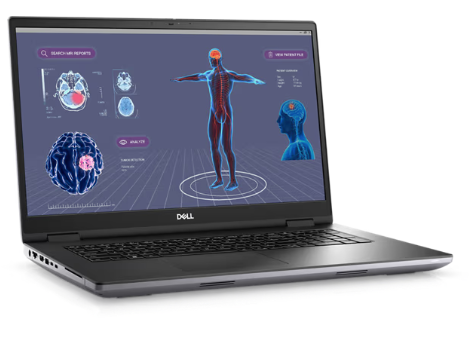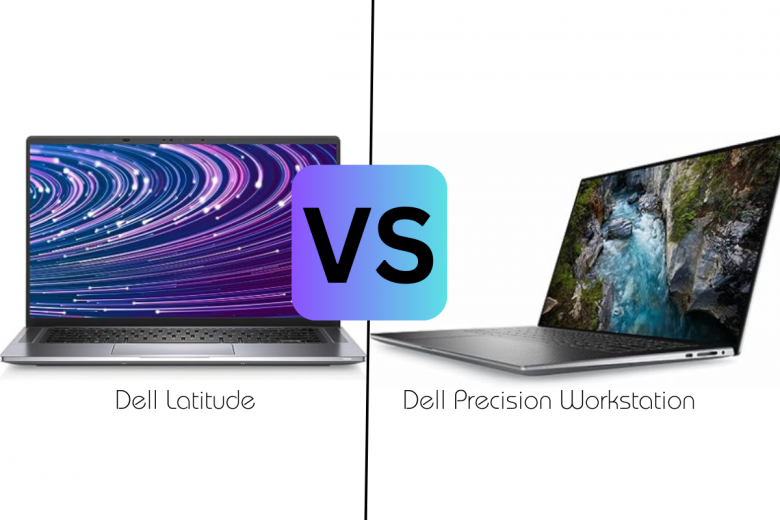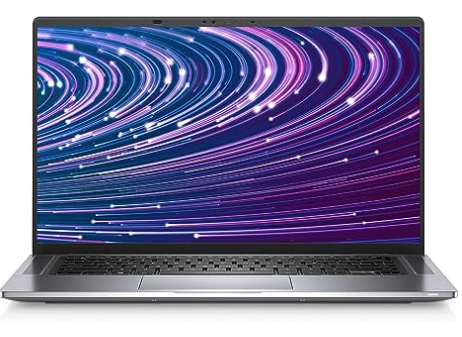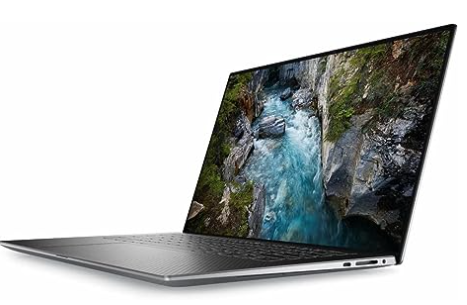Choosing the right laptop for your work needs can significantly influence productivity and performance. Two of the highly regarded series from the technology giant Dell are Precision and Latitude. While both series offer excellent quality and robust performance, they target different user needs and workplace scenarios. This article provides a comprehensive comparison between Dell Precision and Latitude laptops, considering the key aspects that affect professional use.
In the constantly evolving realm of technological innovation, choosing the right laptop that meets specific needs can be a daunting task. Enter Dell, a company renowned for offering a plethora of choices to accommodate a wide range of preferences. Among their diversified portfolio, two flagship series – the Dell Latitude and the Dell Precision, have stood the test of time. While both offer superior computing prowess, understanding their subtle differences is vital to making an informed decision. This article provides a deep dive into the nuances that differentiate these two Dell powerhouses.
It will explore their fundamental designs, performance capabilities, and intended audiences. Whether you’re a business professional craving mobility, or a demanding power user seeking uncompromised performance, Dell’s Latitude and Precision have something for you. Yet, their features, application, and suitability may differ significantly. This article seeks to equip you with the insights needed to determine which model is the perfect fit for you.
In the world where Dell reigns as one of the trusted leaders in computer technology, understanding these distinctions is essential for a satisfying user experience. Read on to unravel the intricate disparities between the Dell Latitude and the Dell Precision.
About the Dell Latitude Laptop
Let’s start by taking a look at the Latitude.
For starters, the Latitude 5540 boasts an impressive 15.6-inch FHD (1920×1080) Anti-Glare LED-Backlit display, which presents crisp visuals and vibrant colors. Alongside this is a well-spaced keyboard, providing comfortable, tactile feedback that ensures productive and efficient typing. The inclusion of a responsive touchpad and the option of a fingerprint reader significantly boost its usability, making it a delight to operate.
One slight disappointment with these laptops is their weight. Most models weigh around or over 4 pounds. This is a tad hefty compared to some of its competitors. Although this might not be a deal-breaker for many, it can be a drawback for those who frequently travel or prefer a lightweight device.
The laptop excels in the connectivity department, offering a healthy variety of ports, including HDMI, USB Type-C with Thunderbolt 4 support, and a conventional USB Type-A. Additionally, the Latitude 5540 supports the latest Wi-Fi 6 and Bluetooth 5.1 technologies, ensuring speedy and stable connections.
About the Dell Precision Laptop
The Precision started as a Dell desktop model. The first models were released in 1997. There are still versions of the Precisions that are towers. However, for the purpose of this article, we will be looking at the mobile workstation version of the Precision. Check out our article on the difference between a laptop and workstation if you’re not familiar with the differences between the two.
What makes this workstation special is that it is equipped with top-tier components and cutting-edge features that meet the needs of the most demanding professionals. It stands tall, combining power, aesthetics, and usability, though it isn’t without its minor shortcomings.
Design-wise, the Precision 5000 sports a premium, sturdy build with a sleek metallic finish. We’ll get into some of the specs later. But you should know that this laptop’s characteristics make it a good fit for graphics-intensive work like video editing or 3D modeling.
Precision 5000 is slightly on the heavier side, which may not appeal to users needing a highly portable device. We’ll go into those details a little later. However, given its powerful specifications, this weight is quite justifiable and won’t be an issue for those who prioritize power over portability.
Target Market and Use Case
The target market and use case of these laptop series further elucidate the differences between them.
The Dell Latitude series is specifically engineered for business use, targeting professionals who require a reliable, secure, and portable device for everyday tasks. The users could range from executives, sales professionals, and project managers to educators and consultants. The lightweight design, long battery life, and robust security features make Latitude laptops ideal for these professionals who often need to work on the go or in various locations.
On the other end of the spectrum, Dell Precision laptops are workstation-class devices designed for professionals who require significant processing power and advanced graphics capabilities. The target market for this series includes engineers, architects, video editors, animators, graphic designers, data scientists, and other similar professionals.
These users often work with demanding applications like AutoCAD, Adobe Creative Suite, 3D modeling software, video editing software, and more. Precision laptops, with their high-performance hardware, large display options, and professional-grade graphics, are built to handle such intensive tasks efficiently.
Price
Price is a significant differentiator when considering Dell Latitude and Precision laptops. This is mainly due to the differing hardware specifications and target audiences.
Latitude laptops, while not considered low-cost, are reasonably priced for the value they deliver, particularly to business professionals. For example, the Dell Latitude 9000 with an 11th Gen Intel Core i7 processor, 16GB RAM, and a 512GB SSD is priced around $1,600 as of 2023.
On the other hand, Precision laptops, packed with high-end hardware and designed for power-intensive tasks, naturally command a higher price. The Dell Precision 5000 5570, for instance, with a 12th Gen i7 Core processor, 32GB RAM, and 512 SSD is priced around $3,000 as of 2023. The Precision 7780, on of the most advanced in the line, can cost around $5,000 for 1TB SSD. These prices can fluctuate depending on specific configurations, regions, and any applicable discounts or promotions.

Precision 7780 Workstation
Build and Design
When it comes to build and design, the Latitude and Precision series exhibit noticeable differences.
Latitude laptops are known for their sleek, lightweight design. This makes them ideal for business professionals on the go. For example, the Dell Latitude 9420, one of the flagship models, is only 0.56 inches thin and weighs about 3.3 pounds. Made from machined aluminum with a diamond-cut finish, it exemplifies a blend of portability and durability.
Conversely, Precision laptops are typically heavier and bulkier, reflecting their workstation status. The Dell Precision 7750, a high-end model, weighs approximately whopping 8.5 pounds. It does, however, maintain a sleekness as its thickness is about 0.46 inches. The laptop’s chassis is made from premium materials like aluminum and magnesium alloy. This ensures it can withstand the demands of power-intensive tasks.
Battery Life
Battery life is another distinguishing aspect of Latitude and Precision laptops.
Latitude laptops, designed for business professionals, emphasize long battery life. The Latitude 9420 offers up to 14 hours of battery life with a 4K display and up to 20 hours with a Full HD display. This extended battery life means professionals can work uninterrupted during long flights or back-to-back meetings without charging.
Contrarily, Precision laptops have more power-hungry components, which may result in shorter battery life. The Precision 7750, even with its 97Whr battery, provides approximately 6 to 8 hours of light use. While it may not compare with the Latitude series, it’s still impressive considering its powerful hardware configuration.
Performance and Hardware
In terms of performance and hardware, the distinctions between the two series are more pronounced.
Latitude laptops, such as the Latitude 9420, generally come equipped with an Intel Core i7 11th Gen i5 or i7 processor. You can also get up to 32GB of RAM, and integrated Intel Iris Xe Graphics. This configuration is more than adequate for running office applications, web browsing, video conferencing, and light multitasking.
On the other hand, Precision laptops are designed to handle more resource-intensive tasks. The Precision 7750, for example, houses Core i9 processor, up to 1TB of RAM. It also has professional-grade NVIDIA RTX 4000 graphics. This powerhouse configuration caters to professionals who frequently use software like AutoCAD, Adobe Premiere Pro, or SolidWorks, requiring substantial processing power and advanced graphics capabilities.
Conclusion
In essence, the differences in build and design, display quality, battery life, and performance between the Dell Latitude and Precision series reflect their respective target markets and use cases. Understanding these differences is crucial in choosing the right laptop to meet your specific work needs.
Also read:
Best Dell Business Laptops with Numeric Pads
Best Laptops for Business and Personal Use
6 Major Differences Between a Laptop and a Workstation











Pingback: The Distinction Between the Dell Inspiron and XPS Laptops - The Owl Report
Pingback: Fascinating Methods & Tactics That Can Help Your Internet Venture Grow ·
Pingback: The Distinction Between the Dell Precision and Latitude Laptops – Webbizmarket.com
Pingback: The Difference Between the Dell Precision and Latitude Laptops – Austin Rotter
Pingback: The Difference Between the Dell Precision and Latitude Laptops – Andrea Zanon
Pingback: The Difference Between the Dell Precision and Latitude Laptops – Joseph Odierno Buffalo